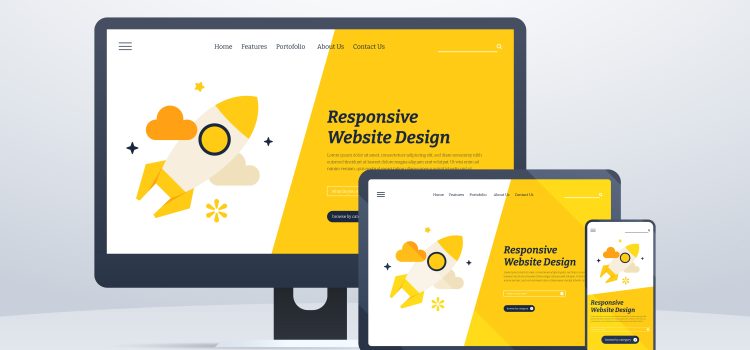










Table of Contents
ToggleIn today’s digital landscape, having a mobile-friendly website is crucial for success. With the widespread use of smartphones and tablets, more and more people are accessing the web on mobile devices. As a result, website owners and developers need to ensure that their websites are optimized for mobile viewing.
This article will serve as a comprehensive tutorial on creating mobile-friendly websites using WordPress, one of the most popular content management systems available. We will delve into the concept of responsive web design, which is the approach that allows websites to adapt and respond to different screen sizes and devices.
We’ll explore the importance of implementing responsive design in WordPress and how it enhances the user experience. Responsive design ensures that your website looks and functions seamlessly across various devices, including smartphones, tablets, and desktop computers. It eliminates the need for separate mobile and desktop versions of your site, providing a consistent and user-friendly experience for visitors.
Throughout this tutorial, we’ll guide you through the process of planning and implementing responsive design in WordPress. We’ll cover topics such as choosing a responsive theme or framework, optimizing layouts, handling navigation menus, and addressing mobile-specific challenges.
The rise of mobile devices has transformed the way people consume online content. Mobile devices account for a significant portion of web traffic, making it essential for website owners to prioritize mobile user experience. Mobile browsing introduces challenges such as smaller screens, touch-based interactions, and varying network conditions. Responsive design addresses these challenges by optimizing the website’s layout, navigation, and content presentation for mobile devices, ensuring a seamless and enjoyable browsing experience.
Responsive design is an approach that aims to create websites that automatically adapt and respond to the user’s device and screen size. It involves designing and coding websites in a way that allows content to adjust and reflow, ensuring optimal display and usability across different devices. The key principles of responsive design include fluid grids, flexible images, and media queries.
Fluid grids: Instead of using fixed pixel-based measurements, the responsive design utilizes fluid grids that are based on proportional percentages. This allows the website’s layout to expand or shrink fluidly based on the screen size, ensuring a seamless user experience.
Flexible images: Responsive design also involves using flexible images that can scale and adjust proportionally to fit within their container. This prevents images from overflowing or getting cropped on smaller screens, maintaining visual integrity.
Media queries: Media queries are CSS rules that enable the website to apply different styles and layouts based on the characteristics of the user’s device, such as screen size, resolution, and orientation. Media queries allow the website to adapt its design to provide the best possible viewing experience.
The first step in implementing responsive design in WordPress is selecting a responsive theme. A responsive theme is designed and coded to automatically adapt and adjust its layout and elements based on the user’s device. WordPress offers a wide range of responsive themes that you can choose from, either from the official WordPress theme repository or from third-party theme providers. Look for themes that explicitly mention their responsiveness in their descriptions or documentation.
Once you have chosen a responsive theme, you can further customize it to align with your brand and design preferences. Most responsive themes provide customization options through the WordPress Customizer or theme settings panel. Here, you can modify colours, fonts, logos, header layouts, and other visual elements to match your brand identity. It’s important to strike a balance between customization and maintaining the responsiveness of the theme. Ensure that your modifications do not interfere with the theme’s responsive behaviour.
After customizing your theme, it’s crucial to test its responsiveness across different devices and screen sizes. This will help you identify any potential issues or inconsistencies that need to be addressed. There are several tools available for testing responsiveness, including device emulators, browser extensions, and online testing services. Additionally, it’s beneficial to conduct real-world testing by accessing your website on various devices, such as smartphones, tablets, and different desktop screens.
Responsive design is not just about adjusting the layout; it also involves optimizing your content for mobile devices. Ensure that your text is legible on smaller screens by using appropriate font sizes and line spacing. Break up long paragraphs into smaller chunks for easier reading. Optimize images for mobile by compressing them without compromising quality. Consider hiding or rearranging certain content elements to prioritize the most important information for mobile users. Utilize responsive-friendly plugins or modules for complex content elements, such as sliders or tables, to ensure they adapt well to different screen sizes.
Navigation plays a crucial role in the user experience of a mobile website. Ensure that your navigation menus are easily accessible and user-friendly on mobile devices. Use a responsive menu that collapses into a hamburger icon or a dropdown menu for smaller screens. Keep the navigation options concise and prioritize the most important sections or pages. Consider implementing sticky navigation to provide easy access to the menu while scrolling. Test the navigation on various devices to ensure smooth and intuitive interaction.
Performance is vital for a responsive website, especially on mobile devices where network conditions can vary. Optimize your website for speed by compressing images, minifying CSS and JavaScript files, and utilizing caching plugins. Use lazy loading to delay the loading of below-the-fold content, reducing the initial load time. Optimize the server response time by using a reliable hosting provider or implementing caching mechanisms. A fast-loading website enhances the user experience and reduces bounce rates.
Testing the responsiveness of your website is crucial to ensure it functions well on different mobile devices and screen sizes. Here are some key steps to follow:
Optimizing the user experience on mobile devices goes beyond responsiveness. Consider the following tips to enhance your mobile-friendly website:
Mobile users often have slower internet connections or limited data plans, so optimizing your website’s performance is crucial. Consider the following techniques:
While WordPress itself provides a solid foundation for creating mobile-friendly websites, plugins can further enhance the mobile optimization of your WordPress site. Here are some plugin recommendations to consider:
Remember to carefully assess and research each plugin before installing and activating them on your website. Be mindful of plugin compatibility, performance impact, and the reputation of the plugin developer. Additionally, regularly update your plugins to ensure they are compatible with the latest WordPress version and follow best security practices.
Designing mobile-friendly websites is no longer an option but a necessity in today’s digital landscape. With the increasing use of smartphones and tablets, users expect seamless browsing experiences across different devices and screen sizes. WordPress provides a range of tools and techniques to help you create responsive websites that adapt to the needs of mobile users.
Embracing responsive design not only improves user satisfaction but also enhances your site’s visibility in search engine results, leading to increased traffic and better overall success for your online presence.
| Cookie | Duration | Description |
|---|---|---|
| cookielawinfo-checkbox-analytics | 11 months | This cookie is set by GDPR Cookie Consent plugin. The cookie is used to store the user consent for the cookies in the category "Analytics". |
| cookielawinfo-checkbox-functional | 11 months | The cookie is set by GDPR cookie consent to record the user consent for the cookies in the category "Functional". |
| cookielawinfo-checkbox-necessary | 11 months | This cookie is set by GDPR Cookie Consent plugin. The cookies is used to store the user consent for the cookies in the category "Necessary". |
| cookielawinfo-checkbox-others | 11 months | This cookie is set by GDPR Cookie Consent plugin. The cookie is used to store the user consent for the cookies in the category "Other. |
| cookielawinfo-checkbox-performance | 11 months | This cookie is set by GDPR Cookie Consent plugin. The cookie is used to store the user consent for the cookies in the category "Performance". |
| viewed_cookie_policy | 11 months | The cookie is set by the GDPR Cookie Consent plugin and is used to store whether or not user has consented to the use of cookies. It does not store any personal data. |
Comments